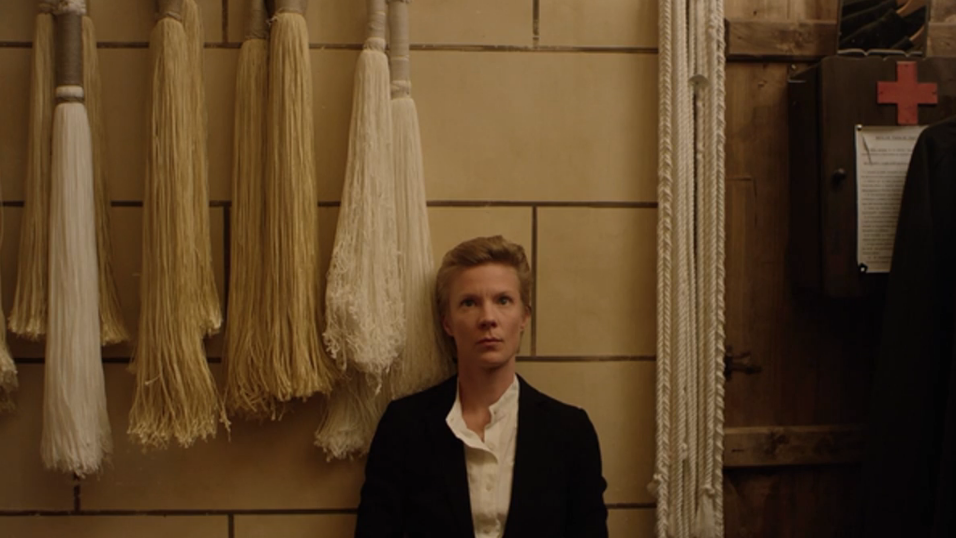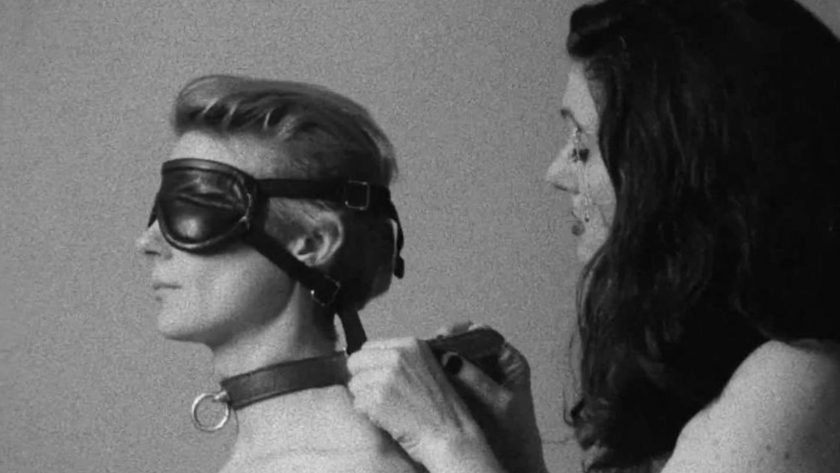Mara Dinu reviews Maja Borg’s daring documentary about the ties between the worship differences in sex-movements and religion.
Everybody experiences the world uniquely and relationships are no exception. Emotions are understood in specific manners and the concept of love is bound to distortion a little bit more with every single person we encounter and get attached to. Love is fluid- akin to emotions- and it’s featured on a spectrum of intensity. But there’s more to it. When we place it between two people it gets dispersed in so many more shades. In Passion, Maja Borg shows the audience her own definition of love and understanding through concepts and practices that might seem strange or even taboo to the average audience.
The dynamic of relationships is explored throughout the documentary in an experimental manner, with intercalated monochrome and coloured scenes, contrasting lights and closeups of human skin, scratches, slaps and leather. The alternation of the same stories and points of view is a classic documentary structure, but the game of light and shadow is an important part of the effect created. The atmosphere is incredibly specific, almost sacred, and Maja has one of the most unique voices I have ever encountered in the field of documentaries. Her artistic side manages to get sprinkled over every single aspect of the film, from the music to her own speech and the way she is explaining her life. She is also a part of the film herself, and she is naturally the best storyteller of this subject because it is her life story and her way of reaching courage.
As director and co-producer, Maja Borg created this incredibly personal film and although they know themselves well enough to tell her story, they also depicted their evolution and whole journey into BDSM and sexuality. They mentioned in an interview that this was like her coming out film, also featuring diverse members of the LGBTQ+ community, queer and kink communities from Stockholm, Berlin and Barcelona. The connection they made between BDSM and Christianity was placed at the core of the story, and even if nothing very specific or direct was implied, I still understood how the two are connected. Maja describes BDSM as a ritual. Put in simple terms, I saw the power dynamics between a master and a slave compared somehow to God and the Christian, the one who speaks and the one who obeys. The interviews with religious people, in the church, and the baptism that took place was not that surprising at this point, it came as a natural next step in Maja’s journey of reaching their true self. The link between religion and bondage is shown as a way for people to reach a higher spiritual level and to get closer to God, a God described as everything.

However, it is the slave’s responsibility to set boundaries, which is a problem many of us have to deal with in any type of relationship, romantic or not. This was the most important aspect of the film to me – this very clear definition of communication, setting boundaries and following a specific set of rules in our relationships. I have experienced what we refer to as toxic friendships in the past, and not only once, but the level of discomfort was varied from just an inability to say no (out of self-reproach), to intense guilt and a freeze response coming from emotional manipulation of a self-victimizing predator. This documentary is more than just a presentation of the practice of BDSM, and BDSM is more than just a type of sex. The principles on which it is based are vital qualities we must have in order to protect ourselves and the ones we interact with. It implies the deepest introspective view and complete understanding of self.
“I want you to cause me pain. But a pain I can heal.”
Maja Borg
The aspect of pain from BDSM is the most interesting part to me, and if interpreted correctly, it can even have healing powers. The wounds caused by the master on the slave are superficial, physical wounds set within the slave’s boundaries. The meaning behind them is one of pain that the master had to endure and keep inside for so long, which can now finally be placed onto someone else’s body, and the slave will carry their master’s sorrow, in a different shape. Even if the power dynamic seems disproportionate, I perceive both the master and the slave in a position of power, but different types of power – one has the power to take out the pain, place it on a body, commend and hit, the other has the power to set the amount of pain they receive and to heal the wounds, to know for sure they will have the strength to get better. One of the deepest forms of connection appears, and it’s not only about the connection between the two people practicing subjugation, but also a reattachment to one’s self, feelings, and needs. So, if we look at how the power dynamics change with the role, I believe it is more about the type of power and control one exerts.
I can understand why Passion would be considered a documentary with a heavy topic, but I believe that anyone would relate to ideas of it in different ways. At least I, an asexual, could relate to it despite its sexual overtones. It all made a lot of sense and seeing Maja’s deconstruction of bondage made me look at relationships a bit differently, to analyze their power dynamics a bit more.
Watch the trailer for Passion here:




